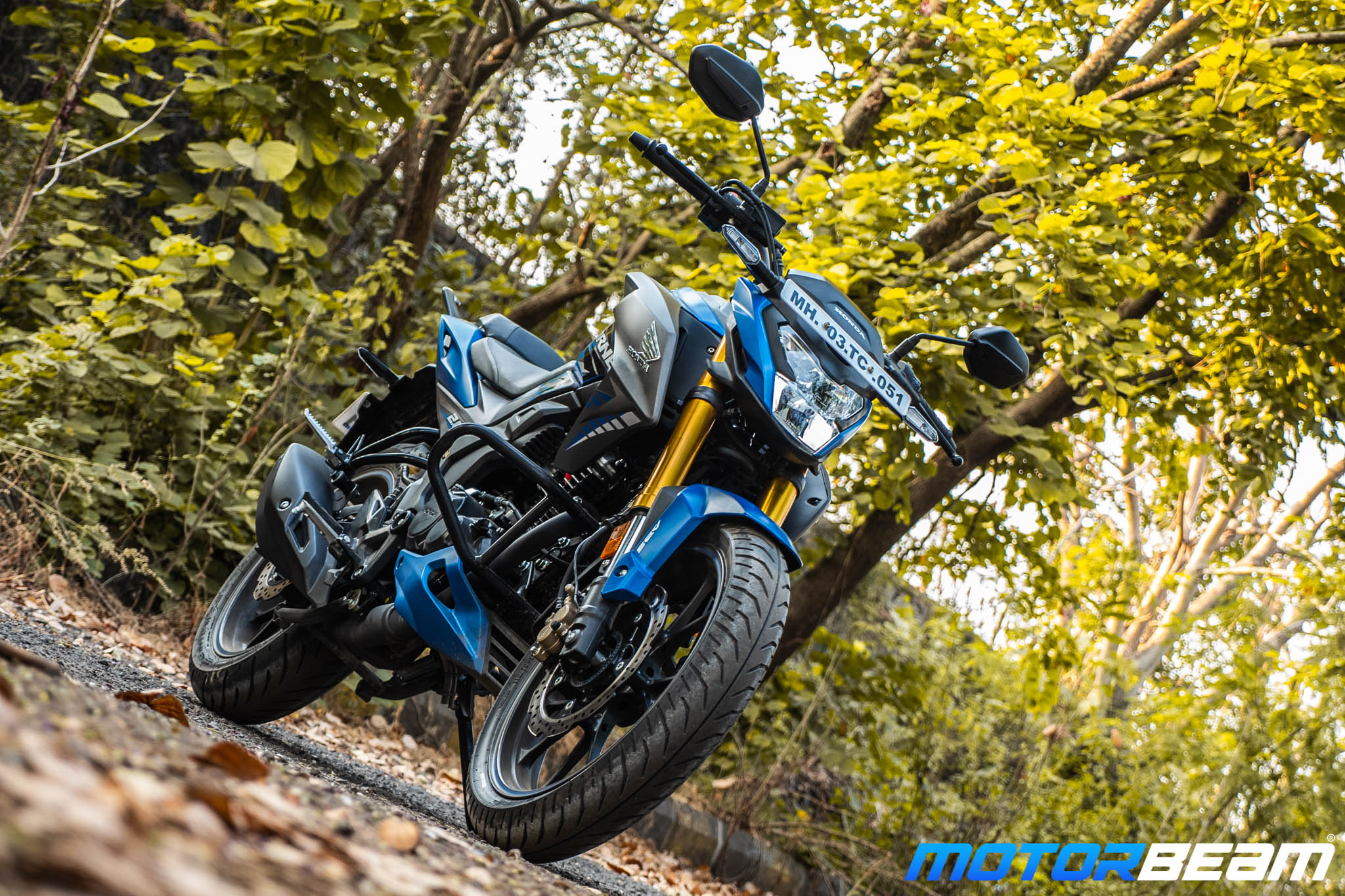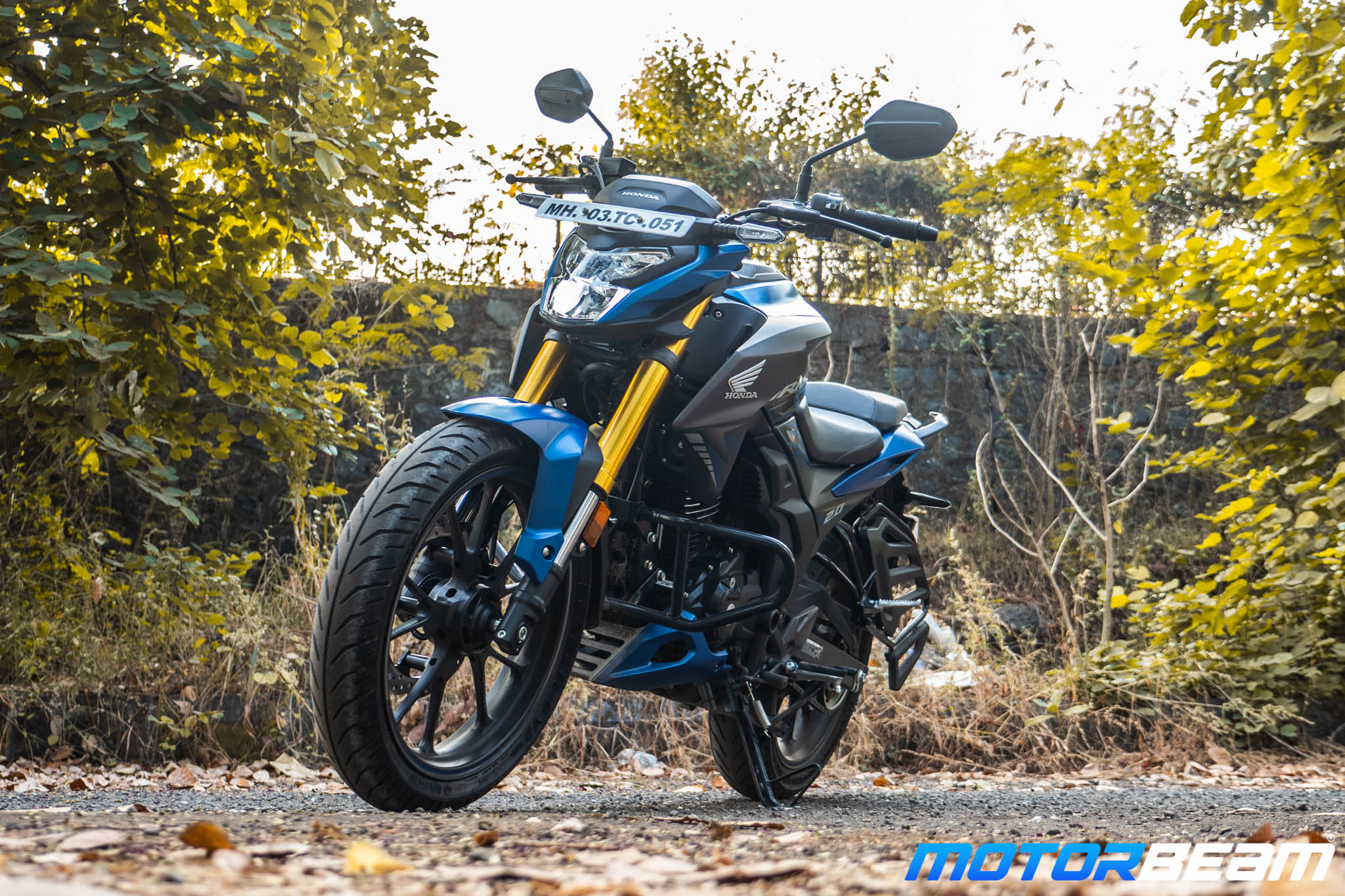
2020 Honda Hornet 2.0 Review
Bike tested: Honda Hornet 2.0; Road Test No. 1262; Test Location: Mumbai
Price OTR Mumbai: Rs. 1,56,633/-
The Hornet 2.0 is an attempt by Honda to up the commuter segment game
The Honda CB Hornet 160R was a likeable sporty commuter motorcycle which looked radical and there wasn’t much wrong with it. For 2020, Honda has updated the Hornet thoroughly, and it’s now called the Hornet 2.0. The new Hornet comes under Honda’s new approach for the Indian market, and Honda claims that they’ve made this especially for the Indian audience. While the bike is based on Honda’s international offering, the CB190R, it is an all-new motorcycle and sees several new components. On paper, the Hornet 2.0 seems like a very promising offering with its USP being the first-in-class USD forks, but everything comes at a price, and it’s on the higher side in this case. But everything’s fair if it manages to justify the price, and this is exactly what we’re trying to find out in our test ride review of the new Honda Hornet 2.0.
Motor Quest: Honda first introduced the CB Unicorn Dazzler back in 2010, replacing it with the CB Trigger in 2013, a new replacement in the form of the CB Hornet 160R in 2015 and now, in 2020, Honda has introduced the all-new Hornet 2.0. The 2.0 is by far the sportiest commuter motorcycle by Honda in India and with a bigger engine, better suspension, and modern features, it definitely has high potential.

Styling: Honda has always had a radical approach for the Hornet name, and we’re glad to report that nothing has changed. What has changed, though, is the overall appearance of the bike. The Hornet 2.0 is a brand new motorcycle, and it boasts of an all-new radical and edgy design. Starting from the front, the headlamp is all LED now along with LED indicators and has chunky golden USD forks for company. This makes the motorcycle appear like a 200cc or a 250cc street-fighter, which everyone actually expected the Hornet to be when it was first teased.
While almost everything is new, the tail section remains relatively untouched
Towards the middle, there are chunky body panels which enhance the sporty and radical appeal of the motorcycle. There’s a new engine cowl as well, which along with the new panels makes the motorcycle appear pretty muscular. Additionally, the Hornet now gets a split-seat setup, which creates a more sporty appearance along with the fresh rear quarter panels. The only unchanged bit is the tail section, which features the same X-shaped light from the previous model. All in all, the Hornet 2.0 lives up to the name tag and is one of the sportiest commuters out there. Also, full credit to Honda for the pre-cat placement as it hides neatly between the exhaust and the engine cowl, without looking out of place.
Instrument Cluster and Switchgear: The Hornet used to have a fully digital instrument cluster earlier, and it still does. However, the setup is somewhat new and the instrument cluster has switched to a negative LCD display. There is sufficient information on display including a gear position indicator, two trip meters, fuel level indicator and a battery voltage indicator along with the basic telltale lights. It isn’t a huge step over, though, as the cluster misses out on features like fuel efficiency, distance to empty, and it can get tough to read in direct sunlight.
There isn’t too much information on offer, but the setup doesn’t feel dated
Coming to switchgear, it is a definite improvement over the previous model, even though it isn’t class-leading. The switches see two new additions, one is the engine-kill switch, and the other is a hazard light switch. We’re happy to report that the quality is great and up to Honda levels by all means. Lastly, there is one other update to the overall setup which is the new key placement, as seen on high end bikes.
Ergonomics: The Hornet 2.0 is a sporty commuter motorcycle, and it feels like one too. The handlebar is a little taller now, and along with slightly rear-set pegs, the posture has become a little more comfortable yet engaging. The seats are all-new, and the cushioning is on the firmer side. This means that commuting duties are not a problem, but extended hours might get a tad uncomfortable. The rear seat has also reduced in width and length now, meaning that the Hornet 2.0 isn’t too pillion friendly, but occasional tag-along won’t be an issue. While everything else feels solid, the mirrors give off a cost-cutting vibe as they feel cheap and don’t offer much visibility too. Special credits to Honda, though, for using a saree guard that one can live with and without planning to remove it the very second they look at the bike.
Performance: Under the flesh, the Hornet 2.0 uses an all-new engine which uses fuel-injection and is BS6 compliant. Honda has intelligently upped the bore size, which has had a positive impact on the size and the performance of the engine. The 184.4cc single-cylinder engine makes 17.03 BHP and 16.1 Nm of torque. This isn’t class-leading by any means, and the engine misses out features like liquid-cooling, slipper clutch or even oil-cooling. Unimpressive, right? On paper, maybe. But things change once you pop the clutch. The motor actually feels very solid while riding. The low-end is strong, the mid-range is even stronger, and there aren’t any flat spots other than the redline.
It might not seem so on paper, but the new engine offers enjoyable performance with high refinement levels
If we dig deep, the compression ratio has actually gone down while the capacity has gone up. This has kept the engine easy to breathe while keeping the temperature in check as well. The refinement is exceptional as well. There are almost no vibes anywhere but at the redline, which is inevitable for a single-cylinder bike. Moreover, while there isn’t any slipper clutch, the 5-speed gearbox is slick-shifting, and it does its duty well. Efficiency-wise, the 2.0 returned 38 km/l during our test, which rounds up to about 400 km for the 12-litre tank. All in all, the motor is excellent, and it’s definitely one of the best sub-200cc engines out there.
Riding Dynamics: The Hornet 2.0 boasts of first-in-class USD forks up front and a mono-shock at the rear, but sadly, the setup isn’t really commuter-y. This is because the Hornet 160R used to have a stiff suspension setup, and this one ups the stiffness by one level. There are two outcomes to this. The stiff suspension means the Hornet 2.0 doesn’t glide over bumps, and even medium bumps can be felt through the spine. This makes the Hornet 2.0 a difficult daily commuter. But there’s good news too. The stiff suspension makes the motorcycle easy in the corners, and it tips into corners confidently.
Spirited riding won’t be an issue, thanks to the brilliant riding dynamics
Other than this, the bike is super agile and cutting through traffic is a breeze. This is primarily because Honda has kept the weight to just 142 kg, which makes it one of the lightest bikes in the class. The bike has decent ground clearance at 167 mm too, and big bumps won’t put a dent anywhere. Coming to stopping duties, a 276 mm petal disc at the front and a 220 mm petal disc offer good stopping power. There’s nothing wrong with the brakes other than the fact that Honda is offering only a single-channel ABS setup, which is a setback at this price. Lastly, the front tyre is now wider, but the MRF rubber isn’t too sticky for spirited riding.
Verdict: At Rs. 1,56,633/- (on-road, Mumbai), the new Honda Hornet 2.0 definitely costs more than its direct rivals and falls into the clutches of the 200cc offerings. While it might not seem like the most bang for buck offering, the Hornet 2.0 is an excellent offering and has improved significantly over the previous model, especially for people who appreciate good riding dynamics. It’s definitely one of the most fun-to-ride sub-200cc bikes, and one can definitely consider it in today’s market. However, if you’re looking for more power, more technology, and more city-biased dynamics, there are better motorcycles for around the same amount.
What’s Cool
* Styling and fit/feel is excellent
* Low-end and mid-range is punchy
* Riding dynamics are sharp and rich
What’s Not So Cool
* Pricing is on the higher side
* Instrument cluster could use more information
* Suspension setup is stiff and unsuitable for daily duties
2020 Honda Hornet 2.0 Specifications
* Engine: 184.4cc, Air-cooled, Single-cylinder, SI Engine
* Power: 17.03 BHP @ 8500 RPM
* Torque: 16.1 Nm @ 6000 RPM
* Transmission: 5-Speed
* Top Speed: 117.6 km/hr (VBOX)
* Fuel Consumption: 38 km/l
* Fuel Type: Petrol
* Frame: Diamond Frame
* Suspension: Upside Down Forks (Front), Monoshock (Rear)
* Tyres: 110/70/17 (Front), 140/70/17 (Rear)
* Brakes: 276 mm Petal Disc (Front), 220 mm Petal Disc (Rear) Single-channel ABS
2020 Honda Hornet 2.0 Dimensions
* Length x Width x Height: 2047 mm x 783 mm x 1064 mm
* Wheelbase: 1355 mm
* Ground Clearance: 167 mm
* Seat Height: 790 mm
* Fuel Tank Capacity: 12-litres
* Kerb weight: 142 kgs




